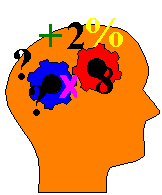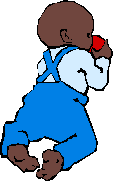Path of discovery series: 1. Uncertain beginnings
Why is it that some children can give you number bonds to ten, and yet are unable to count to ten accurately?
Why is it some children can count in tens to one hundred and yet they cannot tell you which number comes after 39?
Perhaps it is because we treat mathematical learning as a path of stepping stones. One concept is introduced to be assimilated before the next is tackled. No-one would argue with the statement that 'maths is a subject which requires a progression of knowledge', so what goes wrong?

When we come across a problem in life we do our best to get around it. We find tricks and ways of avoiding our problem, and thus mask our difficulties from other people. We are able to regurgitate facts, but we do not understand the principles behind them. In maths, these tricks often involve major feats of memory.
Everybody is different. A concept that might be obvious to one person may be difficult for another to grasp. That person may require a different approach - say a practical, 'hands on' method rather than an abstract, 'algebraic' approach. They may just require a little more time to 'get it straight' in their mind, or they may simply be unsure that they have understood. Nobody likes to stand out by saying that they haven't understood, especially when it seems that everyone around them has understood perfectly. (They aren't asking for more help, so they must understand.)
As an illustration let's look at something which we may have first encountered in secondary school - Ohm's Law. It says
$$V = I R $$
that is, voltage is proportional to current and resistance. A 'non-mathematician' may also have to remember
$$ R = \frac{V}{I} \; \mbox{ and } \; I = \frac{V}{R}$$
whereas a mathematician who understands changing the subject of a formula, can easily manipulate the first equation to form the other two.
In the 'real-world' of teaching a class of some 30 children, there is never enough time to ensure that every child has had every opportunity to fully comprehend what is being taught. We do our best to explain, show and allow the children to try out new ideas for themselves in a variety of contexts and approaches. But we do not expect 100% of the class to fully understand, before we have to press on with the next topic. Gradually we build up a cache of pupils who are gaining a cumulative lack of understanding, until, as we are well aware, they have such a poor 'background' knowledge, they have little hope of understanding the next topic, and they are inevitably labelled as 'the bottom group'.
Crazy paving
Can we avoid this downward spiral, which leads to children who give up on maths, and teachers who are frustrated because they don't have the time to give all the extra help that is needed?
Instead of a path of stepping stones, try to imagine mathematical knowledge as a broad crazy paving. There is no one right place to start and there is no one right route to follow. Each stone is surrounded by several others and the most satisfying route is a slow meander over all the stones!
Because a child can apparently add two numbers, we shouldn't assume that he has understood what addition means or even what numbers are. It may be he has found a trick which allows him to jump over a stone or two of the crazy paving. Similarly, children who can perform mathematical 'party tricks' without a true understanding of what is involved, may have been led on a route along the path without being able to stop and absorb the view from other stones along the way.
So what can we do to give children more time to absorb and understand mathematics? Well, we can't invent more time, but we can share time with other topics on the curriculum, and we can ensure that a child's free or 'choosing' time is well used.
Maths is all around us

Right from day one, babies and children are exploring the world around them. Gradually their known world becomes larger and every new encounter has to be analysed and stored for later reference. Babies and young children are very busy indeed! As the children grow, their world divides into 'home' and 'school', and school is further sub-divided into 'subjects'. As teachers, we should endeavour to remember that life isn't really a series of different subjects, but is a conglomeration without boundaries.
The daily mathematics lesson shouldn't be treated as the day's sole allotted time for maths. It is instead a very valuable hour for concentrated work on formalising familiar ideas and introducing new ones. But your children's contact with maths doesn't start and finish within that hour, it is a continuous encounter throughout their waking day. Just take a minute or two to think of all the mathematical things you have done today. Don't just think of times you have used numbers, but include telling the time, measuring weights or lengths, judging spaces (when parking the car), using money, and so on. OK, so some of it is pretty basic stuff, but then you've had years to practise! Remember, even you had to learn to count, and learn the days of the week, etc.
Because maths is such an integral part of our lives we tend to forget that we too had to learn everything in the distant past, and we can often assume a child will have a certain piece of mathematical knowledge when in fact they do not. Our role as teachers is to provide that child with as many opportunities for learning as possible. We can do this in school and we can help parents to provide simple learning opportunities at home by establishing a good two-way interaction with parents and carers.
Maths through play
Here are a few suggestions for how maths can be included throughout the day.


- Be aware of when you are, and when you could be, using mathematical vocabulary rather than talking about 'amounts' talk about 'lengths', 'weights', 'amounts of money', etc., demonstrate what 'sharing' and 'exchanging' mean when the occasions arise naturally, use the vocabulary of shapes and time, etc., etc.
- Take time to count objects (sheets of paper, pairs of scissors, etc.) out loud.
- Use register time as an opportunity for a quick calculation - 32 children in the class, 2 are away, how many are here?
- Have a daily 'calendar' session to familiarise the children with the names and order of the days and the months, and to introduce ordinal numbers.
- Use art sessions to make up patterns, print 2 D shapes with the faces of 3 D shapes, build 2 D shapes into pictures.
- Use mathematical vocabulary in science and technology sessions.
- Teach the children to play board games with a dice. Using a die with spots helps the understanding of the connection between the names of the numbers and their meaning. Using two dice helps to establish number bonds.
- Teach the children to play dominoes. (picture and spot dominoes)
- Help the children with jig-saws, so they can learn how to try pieces in different orientations. A piece that seemed not to fit, now magically does.
- Provide a rich variety of 'spatial' toys, such as peg boards, stacking and nesting toys, bead counting frames, wooden and sticky-paper mosaic shapes, building blocks, shape matching toys, jig-saws, mosaic colouring sheets, etc., etc.
- It is most likely that the children who would gain most benefit from these toys and games are the ones least likely to opt for them. Encourage them by providing simple puzzles, games etc. that they can complete and achieve with little or no help, and gradually make things more difficult.
- 'Guide' the children to use these activities during their 'free-play', and 'choosing' times. Encourage them to play the rules properly and not to give up when things seem difficult.
- If you are lucky enough to have a classroom assistant, encourage her to talk with the children as they play. Get them to name the number thrown on the dice, count aloud the number of squares moved, name the number reached on the board, name and describe the shapes being used, 'think out loud' when looking for the next domino needed in the line, etc., etc.
The list could go on. The idea is not to produce artificial 'maths opportunities', but to be aware of real occasions when maths is used. By actively allowing children to develop mathematical thinking, away from 'the maths lesson'
The next article in the series can be found here.
